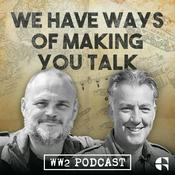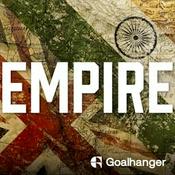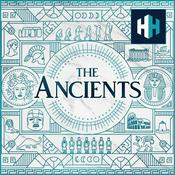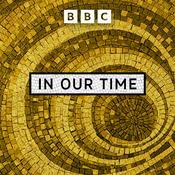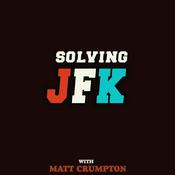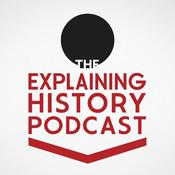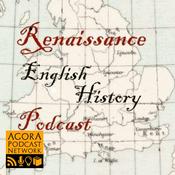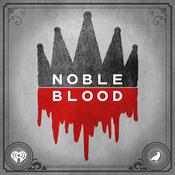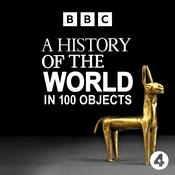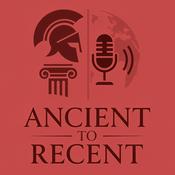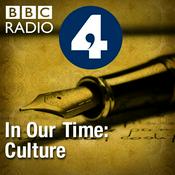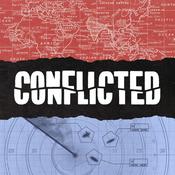257 episodes

Episode 256 - The Lightning of Heaven Release Spirits as Rorke’s Drift Comes into Play
04/1/2026 | 24 mins.
Lord Chelmsford who had scurried off to the east in support of Major Dartnell only made it back to the slopes of Isandlwana at dusk on the day of 22nd January 1879. As the nervous British soldiers advanced, they could see dense masses of the Zulus retiring with herds of cattle and their wagons up on the skyline to their right. About 800 metres from the Isandlwana battle site, they stopped and formed into a line. The guns were in the centre on the road, with three companies of British infantry, a Natal Native Contingent battalion and a portion of cavalry on each flank. The mounted police were in reserve. Chelmsford ordered the guns to fire on the nek of Isandlwana, while Major Wilsone Black advanced up the right to seize a koppie overlooking the battlefield that the British named Black’s Koppie. IT was about 7pm. Black signalled the main force to advance, and Captain Harford who marched up with the 2/3rd NNC noticed the grass had been trampled flat and smooth by the size of the Zulu army. Soon they began to stumble as they tripped over bodies and Harford admitted later “… nothing on earth could make those who were armed with rifles to keep their place in the front rank, and all the curses showered on them by their offices could not prevent them from closing in and making up in clumps…” The darkness spared the soldiers the magnitude of the disaster but not the details … Captain Penn Symons reported later that they constantly stumbled over the “Naked, gashed and ghastly bodies of our late comrades….” The Zulu opened up the bowels of the dead to allow the soul to depart, but to the English eye, this was an act of desecration of a body. “After killing them,” said Kumpega Qwabe, one of the warriors later “we used to split them up the stomach so that their bodies would not swell.” Zulu traditional belief recognized the frustration of gases produced by a decomposing body as a spirit of the man unable to leave its earthly form. If the killer did not open the stomach, the spirit’s wrath would attach to him and he would suffer all manner of misfortunes, his own body might swell like a corpse, and he would be driven mad. Chelmsford visited Harford and his NNC during the night, and asked if they thought the Zulus would attack again. Harford said yes, he could not know that the Main Zulu army was exhausted, they had also taken terrible casualties and were in no mood to continue battling the British. As I mentioned last episode, some warriors left immediately, most remained in the area for three days waiting for as many of their wounded as possible to recover sufficiently for the march over 100 kilometers back to their homes. Chelmsford had made up his mind to abandon the camp before dawn the next morning and later he would be condemned for not staying long enough to buy the dead and salvage what he could from the wrecked camp. What critics would gloss over was the fact that his army was in a terrible shape. They had no spare ammunition, all had been seized by the Zulu, the main depot was Rorke’s Drift. They had no food, only a few biscuits. Some of his men had not eaten for 48 hours, all had marched more than 40 kilometers in 24 hours, none were in any state for any sort of exertion. The smell’s of war are always the most visceral, and the most telling. The sights, the sounds are tough to bear, but it’s the smell’s that get you. That night, as his column of 1700 24th Battalion survivors, Natal Native Contingent and colonial mounted troops bivouacked, the odour of death and destruction seeped into their consciousness. During the night, British and Zulu warriors had come across each other, bumped into each other — some drunken Zulu on one of the wagons had been bayoneted, too motherless to escape. The soldiers from both sides exchanged words — cursing each other in a language neither could understand but the meaning was inescapable.

Episode 255 - A Partial Eclipse of the Sun Spreads a Dark Veil Over Bloody Isandlwana
28/12/2025 | 27 mins.
When we ended last episode a mounted patrol had stumbled on the main Zulu army of twenty thousand men which had which had hunkered down in the Ngwebeni Valley north east of Isandlwana. The British had been conducting patrols both north and south of the sphinx shaped mountain, and had been following a group of Zulu who were foraging mielies and cattle for the huge army. Looking down on this huge force, the shocked British patrol had opened fire on the warriors from their vantage point and galloped away to warn Lieutenant Colonel Pulleine back at Isandlwana about the impending threat. The effect of the fusillade on the Zulu warriors was instantaneous. Their discipline, shattered. Huddled in silence for hours they had been informed that the day of the attack would come on Thursday 23rd January, because the 22nd was the first day of the new moon - the day of the dead moon — the unmyuama or blackness when dark spiritual forces lurked close to the fragile membrane which separated the living and the dead. None of the warriors had been prepared for battle through the customary rituals, they had not been drawn up on a circle and sprinkled with medicines to ward off the unmyama, nor had they been addressed by their commanders. Thus no orders were given to attack on the 22nd — and despite the fear of unmyama, Ntshingwayo kaMahole Khoza’s men responded to a perfect moment. The uMcijo regiment broke ranks, joined by the uNokhenke, uDududu, iSanqu and imbibe who stood up and moved off at a rapid pace towards the Nyoni Heights, along with the umBonambi, iNgobamakosi and uVe. Their commanders, Ntshingwayo and Mavumengwana kaNdlela Ntuli tried to intercept these warriors, but they failed. Other regiments like the uTHulwana, iNdluyengwe, iNdlondlo and uDloko which had bivouacked further downstream in the Ngwebeni valley on the Zulu left remained seated. But the moment was too much for one of the more fiery induna’s of the uThulwana, Qethuka kaManqondo — the son of the Magwaza chief — he also broke away, sprinting after the uMcijo. The Zulu commanders worked quickly to settle the rest of the army - and pulled the remaining warriors into battle order, then marched off well behind those who had broken ranks. They used a depression behind the Nyoni heights to obscure their movements from the British down at Isandlwana. Remarkably, the Zulu left had now become the Zulu right, the Right were now in the centre, and the centre had been pushed to the left. Meanwhile, Lieutenant Colonel Anthony Durnford’s mounted reconnaissance patrol were beating a hasty retreat to Isandlwana. His sortie had always been ill-considered. If you recall last episode, Lord Chelmsford had ordered him to shore up the Isandlwana defenses, instead, he’d arrived on the morning of the 22nd and taken off in pursuit of some glory determined to throw himself and his men into the thick of fighting. Back at the British camp, Lieutenant Colonel Pulleine was informed just after midday that the Zulu army was on it’s way, Theophilus Shepstone junior relayed the information. Even today, there are acoustic peculiarities of the countryside around iSandlwana which can possibly be explained by the sharp hills and the rolling broken countryside. Sounds appear to bounce off the hills, echoing oddly, seemingly arriving in unexpected directions. During many re-enactments of the battle there, rifle volleys snap back and forth, providing almost no clue about the direction of fire. The sounds of these initial skirmishes merely confused those at Isandlwana. Reports were being fed back from the vedettes, the mounted scouts on the hills, including those high up on Isandlwana itself. “The enemy are in three columns” was one … another “The enemy are in force behind the hills on the left..” And then “the enemy are retiring in every direction…” It was one just before midday that was spot on .. but by then the flood of half accurate reports drowned it out.

Episode 254 - Skop, Skiet and Donner on the Day of the Dead Moon
21/12/2025 | 21 mins.
The morning of January 22, 1879, dawned with a deceptive, stillness across Zululand masking the fact that over 45,000 men were in motion across a 200 kilometer front, each group operating in a vacuum of information that would, by sunset, shatter the British Victorian ego. At the coast, Colonel Charles Pearson’s Column No. 1 represented the textbook invasion. His force was a heavy, industrial machine led by the 3rd Foot regiment, the Buffs, along with the 99th Regiment, and the Naval Brigade dragging their heavy Gatling guns and artillery. By 5:00 AM, the 5000 strong column was already a dusty serpent stretching more than 8 kilometers back toward the Tugela River. Pearson’s scouts were a mix of the Natal Native Contingent and European volunteers who pushed through the tall grass toward the Nyezane River. They were being observed on Wombane mountain by the uDududu, iMbube, and isigQu regiments - 6,000 warriors under the command of Godide kaNdlela. Wombande mountain lay on the wagon trail between Gingingdlovu on the coastal flats, and Eshowe where Pearson was hoping to setup a main base at the abandoned Norwegian mission station before pushing on to ONdini and Cetshwayo’s HQ. The Zulu plan was traditional, await in complete stillness on the high-ground then sweep in for a surprise ambush. Pearson’s advance guard crossed the Nyezane River and crossed over at 7.30am. Thick bush grew all around, the cavalry was reconnoitering and saw nothing. Vedettes, or mounted guards, were placed to keep an eye out for the Zulu army. Pearson’s main party reached the knoll selected for the first stop at around 8am, and the men began to outspan their oxen for a late breakfast. As the laager was being formed up, a party of the Natal Native Contingent who scouted ahead attracted fire from Zulu snipers. The latest Zulu tactic which would also be repeated at Isandlwana, Rorke’s Drift, and as Evelyn Wood would report later from Hlobane mountain - a combination of heavy fire from high ground in support of a surging attack by warriors on foot. The road was a now completely commanded by Godide, along with the all important high ground and as his snipers fired non-stop, the Zulu horns swept towards the exposed British column. Naval officer Midshipman Lewis Coker had the honor of commanding the first Gatling gun to be used in combat by British troops. Pearson recognized the value of this machine gun and he ordered Coker to take up a position opposite the advancing Zulu. Coker fired off 300 rounds, and the Zulu attack shuddered and halted — then the sound of the rockets fiendishly shrieking led to a general withdrawal. Hart continued advancing on the retreating Zulu when one of the older warriors, his oiled head ring glistening in the morning sun, stopped and turned, fell to one knee in a classic rifleman’s position, took careful aim and fired — but missed. Then he bolted away. Hart noted the conventional approach this older warrior had taken. He’d been trained in the finer arts of fire and movement. 200 kilometers to the north of Pearson near the modern town of Vryheid, Colonel Evelyn Wood who led the left column of the British triple column invasion, was preparing for his morning assault atop the Zungwini Mountain. Wood was by far the most experienced and therefore pragmatic of the British commanders. He had the good fortune of commanding "Flying Column," the vast majority of his men were mounted. The force was centered on the 13th and 90th Light Infantry and the formidable Frontier Light Horse under Redvers Buller. It was in the centre of the three pronged British attack where the day of skop, skiet and donner would change history. This was at the foot of the Sphinx-like crag of Isandlwana where Chelmsford’s Second Column hunkered down.

Episode 253 - The order of Battle Before Isandlwana and Nyezane and ‘ukhuni’ Wood Heads North
13/12/2025 | 21 mins.
Episode 253 - The order of Battle for Isandlwana and Nyezane as ‘ukuni’ Wood Heads North Three separate British columns are inside Zululand and things are hotting up — and not just because of the steamy summer temperatures. In the last few episodes I’ve concentrated on General Chelmsford’ and Colonel Glynn’s operations in the centre, second Column, as they made their way over the Mzinyathi River across from Rorke’s Drift - the centre of the British Invasion of Zululand. This episode we’ll wrap up what was going on in other sectors, further south near the coast, and further north near the Ncome - Blood River, and along the high ground there towards the Phongola River. The First column under Colonel Charles Pearson had entered Zululand across the lower Thukela on the 12th January and was lumbering towards Eshowe, en route to meet up with Chelmsford’s Column Two near Ondini prior to the final assault on King Cetshwayo kaMpande’s headquarters. When the main Zulu army had set off from the ritual jumping off point of kwaNodwengu near Ondini on the afternoon of Friday 17th January 1879 destination, Rorkes Drift, a smaller Zulu force marched off simultaneously. They went in the opposite direction, south west — heading to intercept Colonel Pearson. The uMxhapho ibutho, who were young and motivated, along with the older men of the uDlambedlu and izinGulubu regiments. During the march south towards the Thukela they would meet up with reinforcements. These were small local groups, the iNsukamngeni, the iQwa, uDududu, iNdabkawombe and few other even smaller entities mustered along the coast. The total size of this force was about 6000 led by seventy year-old isikhulu Godide, chief of the Ntuli —and commander of the uDlambedlu regiment. He was also the elder brother of Mavumengwana who as you know, was second in command of the main Zulu army marching towards Chelmsford. Alongside Godide were high ranking coastal chiefs Mantshiya kaMshandu of the Nzuzu, and the older Mbilwane kaMhlanganiso who was induna of the kwaGingingdlovu ikhanda. Other important commanders who joined were Masegwane kaSopigwasi — who happened to be an inceku or counsellor of the king. Phalane, a royal induna, was monitoring events in this second army. Colonel Charles Pearson’s Number one column included 4 750 men 384 wagons and 24 carts. Pearson not been in action since the Crimean War ended in 1856, spending time in St George Grenada, then various other postings until he was selected as one of the special service officers in South Africa. Despite his lack of recent combat experience, Pearson had the difficult task of leading the largest column over the greatest distance. He was ordered to cross the lower drift of the Thukela, then establish a base at the evacuated Norwegian mission station in Eshowe 60 kilometers further on. We’ll come back to what happened to Pearson’s column and the battle of Nyezane in Episode 254 because first we need to swing further north, past Chelmsford and Dartnell and Glynn, and Durnford, and to the Ncome River where the British left column had been very busy. Colonel Evelyn Wood was tasked with an attack on the Zulu in a wide arc from the Ncome or Blood River, all the way along the escarpment to the Phongola River. Wood was stationed at Utrecht and had dispatched a garrison of two companies of infantry to Luneberg, a German mission and farming community further East, closer to the disputed border with the Zulu Kingdom. It was positioned strategically near the eNtombe River, a key crossing point for supplies. There the British established Fort Clery first to guard the settlers then to protect the vulnerable line of communication for Colonel Wood's column as it advanced into Zululand. The amaQulusi lived here, and the action provoked the amaQulusini regiment to mobilize and march up to the enormous flat topped Hlobane Mountain.Unlike some of the other commanders, Wood was a veteran of multiple conflicts.

Episode 252 — Chelmsford’s Fatal Confidence: The Day Before Isandlwana
07/12/2025 | 18 mins.
This is episode 252, it is January 19th 1879, and we’re standing alongside Lord Chelmsford at the British camp based at Rorke’s Drift — and nearby is Henry Francis Fynn Junior. Chelmsford had grown frustrated by the rain which had slowed the crossing of the Mzinyathi at Rorke’s Drift. He had also been frustrated by Henry Francis Fynn Junior who had been negotiating with Zulu chiefs without his permission. Fynn’s father, Henry Francis senior was the first English trader in Natal, and had spent time with King Shaka. The Fynn’s were all fluent in Zulu, and extremely informed when it came to Zulu matters and Fynn junior was working as the magistrate of Msinga region in Natal. Chelmsford was determined to have Fynn permanently attached to his staff, partly to keep and eye on him, and partly to consult with the experienced colonial seeking to test. his tactics. On the 16th January, Chelmsford had written to Fynn’s boss, Natal’s Lieutenant Governor Sir Henry Bulwer asking that he be reassigned. On reflection, Chelmsford decided he wasn’t going to wait for Bulwer and summarily ordered Fynn to Rorke’s Drift anyway. Lord Chelmsford was instituting his new plan of action which he’d outlined to Governor Sir Bartle Frere. Instead of leading his column - or to be completely accurate - Lieutenant Colonel Glynn’s column eastwards in a direct route to Isipesi and Cetshwayo kaMpande’s home of ONdini, he was going to concentrate his attention towards the Malakatha and Hlazakazi hills. These rise between Isandhlwana plain and the Mangeni Valley to the south East. It made sense, because Fynn junior had told him that the Zulu plan was to descend the Mangeni heights and attack Number three column in the rear so he needed to secure his invading columns right, or southern flank. At 9am on the 20th January, and with Fynn at his side, Chelmsford rode east from Rorke’s Drift and paused at ISandhlwana for breakfast. A civilized affair, cold meats, strong hot tea. He wanted to confront Mantshana kaMondisa, a amaQungebeni chief who had told Fynn he was considering joining the British. Which was strange, because prior to this, Mantshana was one of the chiefs believed to have been strongly in favor of a war against British. By the time Chelmsford’s men moved forward on the 20th, the Zulu population had largely abandoned the Mzinyathi River valley opposite Rorke’s Drift. So a great swathe of the country around Isandhlwana lay empty, the homesteads of the amaQungebeni deserted and forlorn, with a few bands of Zulu warriors hiding out in the hills, watching and waiting. Behind the Isipesi Mountain, 24 000 Zulu troops camped on the evening of the 20th January 1879. The warriors had marched at a fairly leisurely pace westwards towards the British, saving up their energy for the actual day of battle, whatever day that was. They did not march alone. Some of the women remained and would be with the column on the day of battle. For every three warriors, there was an udibi boy, a lad in his early teens, loaded down with as much paraphernalia as the haughty warriors could expect him to stagger along with — a cooking pot, sleeping mats, dismantled spare shield, and sometimes, if he was given the honor, carrying the warriors spears. Usually these boys carried a smaller spear of their own and those who did so were going to have an unexpected opportunity to wash their blades in the blood of the soldiers dressed in red. And in the blood of their kin serving with the British — the Natal Native Contingent.
More History podcasts
Trending History podcasts
About History of South Africa podcast
Listen to History of South Africa podcast, WW2 Pod: We Have Ways of Making You Talk and many other podcasts from around the world with the radio.net app
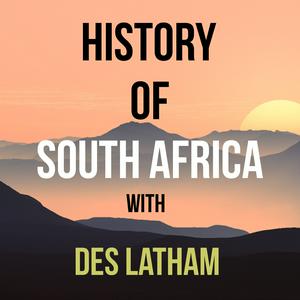
Get the free radio.net app
- Stations and podcasts to bookmark
- Stream via Wi-Fi or Bluetooth
- Supports Carplay & Android Auto
- Many other app features
Get the free radio.net app
- Stations and podcasts to bookmark
- Stream via Wi-Fi or Bluetooth
- Supports Carplay & Android Auto
- Many other app features


History of South Africa podcast
download the app,
start listening.
